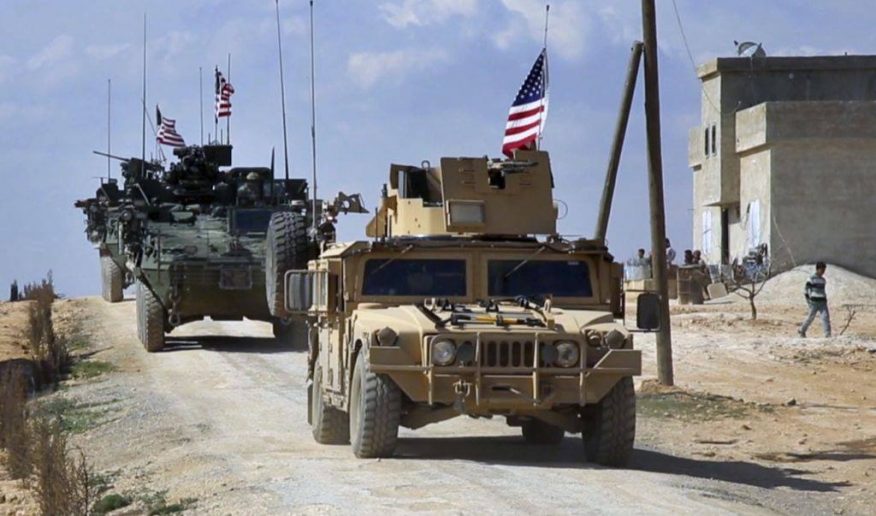America’s part in the Syrian war deserves more recognition for its success
The U.S.-led, anti-ISIS campaign in Syria recently got a boost. Six Bradley Fighting Vehicles were flown in a C-17 Globemaster to eastern Syria from a U.S. base in Kuwait. The armored vehicles are meant for “force protection,” American commanders say. This comes just weeks after a half-dozen personnel were injured when a U.S. patrol in Syria had an accident with a Russian patrol that was shadowing the Americans. Sending the larger, armored Bradleys is a statement that conveys U.S. strength and commitment.
With only a small deployment of several hundred troops and a few vehicles, Washington is able to help secure and influence an area in Syria roughly the size of New Jersey. This is made possible by the partnership with the Syrian Democratic Forces (SDF). The U.S.-led coalition, called Combined Joint Task Force Inherent Resolve, has helped train and equip more than 60,000 SDF fighters since 2015. Together, this has been a campaign of unprecedented success. In fact, there are few examples in history of such a small U.S. force having such a huge amount of influence and wielding its power so well.
In contrast to the conflicts in Iraq and Afghanistan over the past two decades, where thousands of Americans died while fighting, the Syrian campaign is unique. Yet it hasn’t received enough recognition, from the White House, the Pentagon or Americans in general. Why?
One reason that the U.S. role in Syria is not widely known, understood or recognized is that it is seen as a kind of stepchild of the war against ISIS in Iraq. It began in 2014, after ISIS attacked Iraq and the U.S. decided to aid Syrian Kurdish fighters who were under siege in the city of Kobani in northern Syria. Ash Carter, then U.S. secretary of defense, described the U.S. backing of the SDF as a “fortunate find” and described how the group helped clear eastern Syria of ISIS between 2015 and 2017. U.S. Special Forces and airstrikes helped the SDF achieve victory over ISIS in its capital of Raqqa and then defeat the last pockets of ISIS fighters in 2019.
Had the story of U.S. involvement in Syria been about just the defeat of ISIS, the story of the battles from 2015 to 2019 would be one of the most successful military campaigns in history. With relatively little support and local fighters, the ISIS threat — which once attracted tens of thousands of foreign fighters and terrorized Europe — was defeated. However, by 2019 the American public debate was more centered on questions about when Washington would withdraw from the “endless wars” than praising the successes in Syria.
That is understandable. Twenty years of a global war on terror, including clandestine operations from Pakistan to Niger, has left the American public exhausted and produces questions about what the end goal is in places such as Somalia, where the U.S. carries out airstrikes.
This confusion about the U.S. role in places such as Syria has led to policy zigzags on the ground. The Trump administration vowed in 2018 and 2019 to leave Syria, but U.S. forces are still there, securing oil fields and keeping ISIS defeated. They also must deal with tensions with Iran, Russia and Turkey. All this makes Syria one of the most complex geopolitical chessboards in the Middle East.
Military success and six Bradley vehicles won’t change that, of course. This is why U.S. Syria envoy James Jeffrey was in Syria in mid-September, and Washington is trying to support the Kurdish, Arab, Christian and other Syrian partners to form a stable administration over the area the SDF controls. To do that, the Bradley vehicles likely are there to send a message to Russia or others to keep their distance.
There are many lessons to learn from the Syria experience. First, the U.S. fought a successful war with few casualties by supporting local partners. Second, the U.S. can deter Iran, Russia and others with a small military footprint on the ground and airpower in the sky. Third, to be successful in the long run, a political end-goal must be in place. That last part is still lacking in Syria.
The Trump administration should recognize the success that Syria has been and try to build on it and replicate it. The U.S. commanders who made it all possible, as well as U.S. partners on the ground in the SDF, deserve commendation and credit for what they accomplished — and continue to accomplish by keeping eastern Syria free of ISIS and secure.
Source: The Hill – by SETH J. FRANTZMAN

